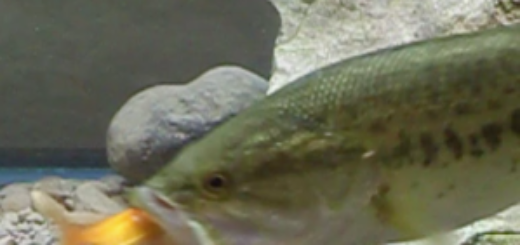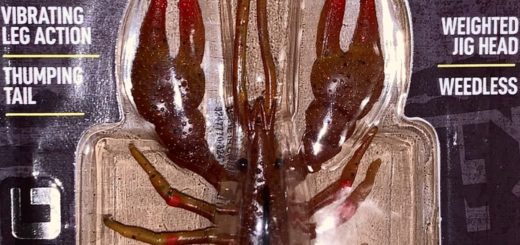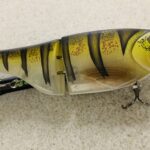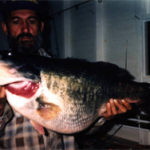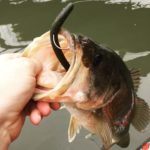Action – measurement of rod ability to return to a straight position that ranges from fast to slow and rod strength that ranges from light, medium to heavy.
Active Fish – Bass that are abundant and aggressive in a particular area.
Angler – A person using a rod and reel to catch fish.
Anti-reverse – Feature of many reels that prevent it from spinning backwards to help with tangles.
Backlash – an overspin of the spool of a bait cast reel due to improper tension. Also known as a birds nest.
Backwater – Shallow, slow moving and often isolated areas in the back of rivers and creeks.
Bag Limit – The given number of fish harvest on a daily basis.
Bank Runner – fairly small bass that spend most of their time near shore and are known to be more aggressive and easier to catch.
Bluebird Sky – term used to describe bright, sunny, cloudless conditions that can negatively impact fishing.
Buzzbait – A topwater bait with propeller-type blades that “buzz” the top of the water as the lure is retrieved.
Carolina Rig – a way to rig soft plastics (and occasionally lures) to keep it just a foot or two off the bottom.
Comeback Lure – a lure used immediately after a bass has struck and missed on different bait.
Community Hole – a well-known and heavily fished area where many anglers are known to have success.
Countdown Lure – a lure that sinks at a prescribed rate
Cover – ambush points for bass such as vegetation, stumps or rocks.
Crankbait – lure designed to mimic moving prey. Some crank baits are lipless run deep on slow retrieves and high on fast retrieves while other crank baits have lips (plastic bills) that allow them to dive at any speed.
Creature Bait – bulky soft plastic bait, usually with many appendages and typically shorter than 5 inches.
Deadsticking – the act of casting our a bait and doing nothing, simply letting is sit for long periods of time.
Depthfinder – sonor units used to see underwater features such as: water depth, underwater vegetation and fish.
Downsize – when anglers decide to use smaller tackle and lighter pound test in order to take more of a finesse approach to catching bass.
Drag – device within reels that can be adjusted to limit how easily a fish can pull out fishing line when hooked.
Drop Shot – Hook is typically tied 18-24 inches above a sinker weight. Often rigged with soft plastics.
Fan Casting – making several casts only a few degrees apart to cover a half circle. This method is used to quickly identify if fish are in a particular location.
Finesse Fishing – an angling technique characterized by the use of light tackle. This method is often used in very clear waters.
Fishfinder – sonor units used to see underwater features such as: water depth, underwater vegetation and fish.
Flipping – also known as “flippin”, is the act of precisely casting a lure to a given spot using an underhand cast that lands quietly with little disturbance of the water.
GPS (Global Positioning System) – feature of many fish finders to allow anglers to mark exactly where they have caught fish in the past or may have experienced water hazards.
Gamefish – species of fish that are pursued for sport and because of their fighting ability when hooked.
Hawg – slang term for a big largemouth bass
Honey Hole – a personally productive or go-to fishing spot that has big or lots of fish.
Hook Set – the process in which anglers pull back on the rod to drive the hook into the mouth of a fish.
Jerkbait – a lipped, elongated, minnow shaped lure retrieved with a jerking motion of the rod tip.
Jig – a weighted head from which a hook protrudes, often includes a rubber or silicone skirt.
Johnboat – usually a small flat bottomed aluminum boat for smaller bodies of water that may be powered by only batter and trolling motor or a very low HP gas motor.
Laydown – a tree that has fallen into the water, typically a portion of the tree is underwater and while another portion is still exposed above the water and may be resting on land.
Lipping – a way to hold bass by grasping its lower lip.
Livewell – container used to keep bass or baitfish alive by use of an electronic aeration system.
Lunker – slang term for a big largemouth bass.
Match the hatch – selecting a lure that matches the size and color of the bait the fish are currently eating.
Pitching – an underhanded cast in which the rod top is raised to swing the bait forward that allows anglers to cast further distances than flipping.
Plastic Worm – a mold poured soft plastic lure and one of the most popular lures in bass fishing.
Post Spawn – a period right after fish mate (spawn). Many times the fish are exhausted and lethargic as they recover but then become hungry and aggressive once recovered.
Pound-Test – the pull-pound rating or amount of pressure at which fishing links breaks.
Pre-Fishing – fishing a body of water before a tournament to develop a game plan and strategy for tournament day.
Pre-Spawn – the period before fish spawn when bass move to shallower waters to feed aggressively.
Punching – the technique uses sinkers to get baits through heavy cover to fish waiting below.
Reaction Bite – triggering a bass to bite on reflex when surprised by a lure.
Ripping – a retrieval method for jerkbaits in which the bait is quickly jerked forward followed by a period of rest that allows the lure to fall.
Schooling – when many bass are congregated in the same area chasing baitfish.
Shad – common baitfish minnow food source for bass.
Sight Fishing – fishing for bass that are visible to the angler. This often happens when fish are on spawning beds.
Slow Rolling – method of retrieval in which the angler brings the lure in at a rate just fast enough to create the appropriate action.
Spinnerbait – lure shaped like an open wire safety-pin with exposed hook. Often dressed with skirts of various colors and blades of various shapes and sizes.
Spoon – usually metallic in nature and color to imitate the flash of a minnow; spoons can be jigged or casted and retrieved.
Structure – ambush points for bass such as vegetation, stumps, rocks or contour changes such as flats and channels.
Texas Rig (Texas Rigged) – A way to rig a soft plastic to a hook so that the barb is concealed and the rig is essentially “weedless”.
Thermocline – A layering in the water column where rising warm and sinking water meet but do not mix.
Topwaters – Hard plastic or wood floating lures that create commotion on the surface of the water when retrieved.
Trailer – an item such as a hook, blade, or plastic that is attached to the back hook of a lure to increase chances of triggering a bite or catching a fish.
Wacky Rig – the method of hooking a soft plastic bait through its center or middle leaving the hook exposed.
Walk-The-Dog – topwater retrieval technique in which the angler works their wrist, pole, and reeling speed in coordination to make the lure move back-and-forth in a zig-zag pattern.
Weed Guard – plastic or wire that covers the hook points to allow a lure to be fished through cover but that is easily suppressed when contacted by a fishes mouth.
Water Column – Is a term used when referring to specific depths across a vertical cross-section of the water body.
